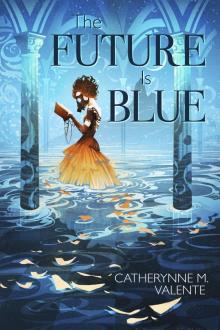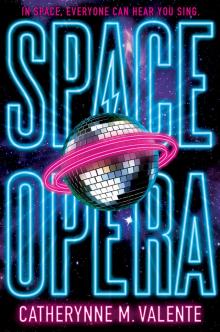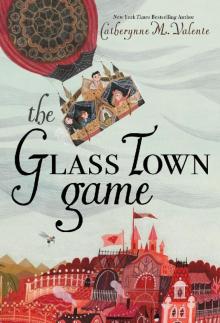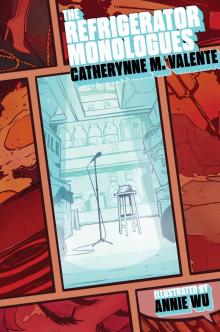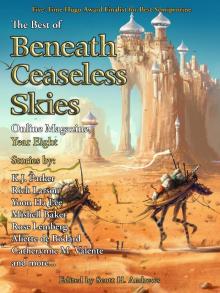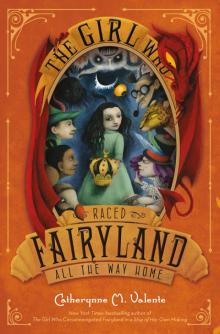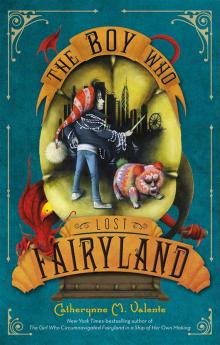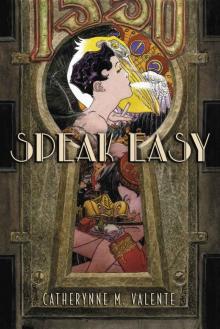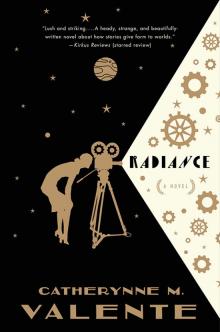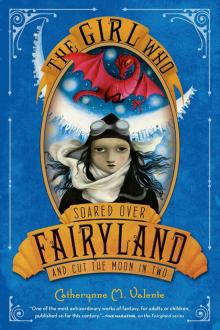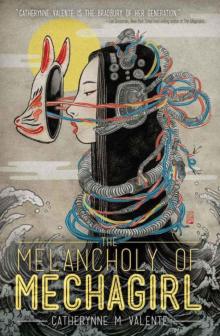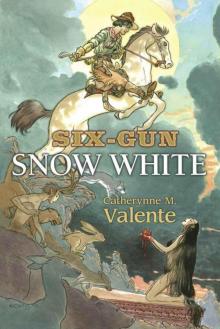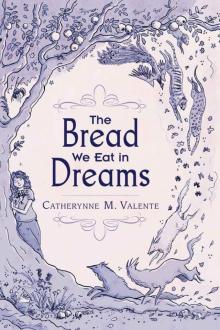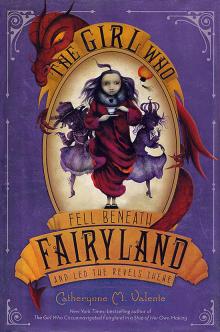


Giles Goat Boy
John Barth

Copyright © 1966, 1987 by John Barth
All rights reserved under International and Pan-American Copyright Conventions. Published in the United States by Anchor Books, a division of Random House, Inc., New York, and simultaneously in Canada by Random House of Canada Limited, Toronto. Originally published in hardcover in the United States by Doubleday in 1966. The Anchor Books edition is published by arrangement with Doubleday, a division of Random House, Inc.
ANCHOR BOOKS and colophon are registered trademarks of Random House, Inc.
Library of Congress Cataloging-in-Publication Data
Barth, John.
Giles goat-boy, or, The revised new syllabus.
I. Title. II. Title: Giles goat-boy.
III. Title: Revised new syllabus.
PS3552.A75G5 1987 813′.54 87-8886
ISBN 0-385-24086-4
eBook ISBN: 978-0-8041-5249-5
www.anchorbooks.com
v3.1
FOREWORD TO DOUBLEDAY ANCHOR EDITION
As we look back at the period now, the American 1960s may be thought of as having begun on November 22, 1963, with the assassination of President John F. Kennedy, and as having ended on Yom Kippur 1973, with Egypt’s attack on Israel and the consequent Arab oil embargo. By this definition, Giles Goat-Boy—written between 1960 and 1965, and first published in 1966—has one foot in the Fifties and one in the Sixties, as its hero has one foot in the library of “the University” and one (at least) in the campus goat-barns.
At the end of “the Fifties,” the Cold War was chilly indeed: Both the U.S. and U.S.S.R. by then had operational hydrogen bombs, intercontinental ballistic missiles, and nuclear submarines. The successful Sputnik launch of 1957 had triggered both the “space race” and an epidemic of academic gigantism in the U.S.: a massive effort to “catch up,” fueled by an inpouring of federal money that would fertilize the groves of Academe right through the Sixties. And the Cuban missile crisis of 1962—another reasonable benchmark for the change of decades—had brought home to many, as the atmospheric testing of thermonuclear weapons had not, the specter of apocalypse. On other fronts, the nation was already considerably involved in Vietnam, the black civil rights movement was in full swing, commercial jet airline service had recently been established, and tape recorders and stereo music systems had been added to television for our domestic entertainment. The personal computer was still well into the future, but large mainframe computers were “in place,” especially on the booming university campuses, and electronic data-processing had unequivocally impinged upon the public consciousness. Hippies had not quite invented themselves yet, but Beatniks were well known, with their countercultural aura of Zen Buddhism and narcotics. In American fiction, the phenomenon called Black Humor was not only established but had pretty much run its course.
Numerous of these elements echo through the novel, transmogrified into the simple—I would even say the deliberately, programmatically “sophomoric”—terms of the allegory, which is not an allegory at all in the Dantesque or Kafkaish sense, but merely a manner of speaking. There too reverberate some of the author’s literary-professional preoccupations at the time, less sophomoric, I hope, as well as a few personal-historical circumstances.
To speak first of the former: By 1960 I had completed what I regarded as a loose trilogy of novels—The Floating Opera, The End of the Road, and The Sot-Weed Factor—and I felt, particularly in course of writing that extravagant third item, that I had put something behind me and moved into new narrative country. Just what that movement was, I couldn’t quite have said; today it might be described as the passage made by a number of American writers from the Black Humor of the Fifties to the Fabulism of the Sixties. For four years, writing Sot-Weed, I’d been more or less immersed in the sometimes fantastical documents of U.S. colonial history: in the origins of “America,” including the origins of our literature. This immersion, together with the suggestion by some literary critics that that novel was a reorchestration of the ancient myth of the Wandering Hero, led me to reexamine that myth closely: the origins not of a particular culture but of culture itself; not of a particular literature, but of the very notion of narrative adventure, especially adventure of a transcendental, life-changing and culture-changing sort.
Deep stuff. I was living at the time in a rural village in central Pennsylvania and teaching at a huge state university that got huger every semester. My own alma mater had been small, intense, and fairly elite, at least academically; I was charmed and impressed by the great scale, the Jacksonian democracy, and the multifariousness of American land-grant universities, not a bad microcosm of the land itself. In an English department of nearly a hundred members, I taught my classes not far from a water tunnel for testing the hull forms of missile submarines, an experimental nuclear reactor, laboratories for ice-cream research and mushroom development, a lavishly produced football program with halftime shows on the Hollywood scale, a barn-size computer with elaborate cooling systems (if I remember correctly, the machine was never shut down, even when “off-line”)—and the literal and splendid barns of the animal husbandry departments, surrounded by vast experimental farms and barnyards where, among other livestock, radioactive turkeys prowled, as did I and my then-small children.
No goats. I would supply that defect from my imagination.
I had crossed a border much remarked by poets, the age of thirty, and was approaching another much remarked in heroic myth, the age not so much of midlife crisis as of maturational crux: 34, 35, or 36, depending on whether you have in mind Jesus’s crucifixion, say, or Dante’s impasse in the Dark Wood (halfway through the Biblical threescore-and-ten), or Carl Jung’s actuarial individuation-point. In Giles I make that age 33⅓: the long-playing moment when the mythic hero—who is all of us, writ large—is summoned to his mysterious destiny. He must leave his (usually adoptive) home and parents, the familiar daylight world of conscious reality and sundry ego-tokens; he must pass through the twilit territory of dreamish forms and porous categories; aided by guides, helpers, intuitions, tricks, and secrets, he must deal with initiatory riddles and ordeals, with irreal (but not unreal) monstrosities of the subconscious; he must attain at last the Princess, the Elixir: unmediated, noumenal knowledge in that dark, unconscious, nameless center, the bottom of things.
This has ever been, literally or figuratively, a spiritual/psychological adventure as well as a physical one. Historically, each has represented the other: The mystic’s progress toward unitive transcendence is reported in images of literal journeying and hazarding; the wandering hero’s quest, in images of descent or ascent to, and communion with, the gods. Moreover (as the great pragmatist William James makes poignantly clear in his chapter on mysticism in The Varieties of Religious Experience), it is an adventure with a quasi-tragic sequel. Having attained Davey Jones’s Locker, or the hand of the ogre’s beautiful daughter, or the vision of the Rose or of Rome, the hero must now return to the everyday working world and do real work in it. Fortified by an illumination essentially ineffable, he must translate that illumination into action—into laws and cities, religions, poems, novels—knowing or discovering that such translation will inevitably compromise, betray the vision. (In some wise languages, the verbs for translate and betray are the same; Giles Goat-Boy has been betrayed into several tongues.) Here is where mysticism, traditionally associated with “the wisdom of the East,” crosses paths with the classically Occidental tragic view; where the wandering hero Oedipus fatefully reencounters somebody older than himself.
But Oedipus’s crossroads, we recall, was a place where three roads meet, not two; and indeed, this talk of encounters between Tragicism and Mysticism has fetched us a long way from my line of work, the comic novel. Beside the tragic view and the mystic view
of human experience has always run another, in Western Civ at least: the comic view. “Gaiety transfiguring all that dread,” as Yeats writes of Hamlet and Lear in Lapis Lazuli. And not only in the Western tradition: Yeats’s great poem ends with the image of two Chinese sages on a mountain top:
On all the tragic scene they stare.
One asks for mournful melodies.
Accomplished fingers begin to play.
Their eyes mid many wrinkles, their eyes,
Their ancient, glittering eyes, are gay.
I had another reason, too—other than the fact that my muse is the one with? smile on her face—for approaching the mystic and the tragic by way of the comic: It has to do with what the Italian semiotician/novelist Umberto Eco calls “ironic double coding” (a hallmark of postmodernism, in Eco’s opinion). In an age of hyperselfconsciousness and lost innocence, straightforward mysticism (or tragicism or mythicism) is as likely to off-put the knowledgeable reader of fiction as—to borrow Eco’s example—the naive declaration “I love you madly” is likely to off-put a sophisticated lover. The knowledgeable and sophisticated, however, may still need to make and receive declarations of love, as people still need the tragic and the mystic perspectives—without, as Eco puts it, succumbing to false innocence or to disregard for “the already-said.” Comedy—especially irony and what might be called impassioned, compassionate parody—can sometimes come to the rescue. “As they say in hack romantic novels,” Eco’s lover might say in effect to his beloved: “ ‘I love you madly.’ ” Late in the historical day, a declaration of love has still been made and, perhaps, received.
Mystery, tragedy, comedy: The place where those three roads met for me was Giles Goat-Boy: the adventures of a young man sired by a giant computer upon a hapless but compliant librarian and raised in the experimental goat-barns of a universal university, divided ideologically into East and West Campuses. Assigned a riddling series of tasks upon his matriculation, he must come to terms with both his goathood and his humanhood (not to mention his machinehood) and, in the very bowels of the University, transcend not only the categories of East and West but all the other categories as well; transcend language itself—and then return to the daylight campus, drive out the false Grand Tutor whom he understands to be an aspect of himself, and do his best to eff the ineffable.
I wrote the novel between my 30th and 35th birthdays. Begun in State College, Pennsylvania, continued in goat-rich southern Spain, and completed in Buffalo, New York, it represents, needless to say, a passage for its author as well as for its caprine hero. It was my own (still ongoing) attempt to do what Giles the goat-boy and every one of us must: understand on the deepest level what’s what with ourselves and our life in the world, and endeavor—tragically, comically, however—to do something with that understanding.
Langford Creek, Maryland, 1987
Copyright © 1987 John Barth
Contents
Cover
Title Page
Copyright
FOREWORD TO DOUBLEDAY ANCHOR EDITION
PUBLISHER’S DISCLAIMER
COVER-LETTER TO THE EDITORS AND PUBLISHER
VOLUME ONE
First Reel
1. His keeper. His kidship
2. His Deanship of the Hill
3. Lady Creamhair
4. In the hemlock grove with Lady Creamhair
5. He attacks Max. His espial of a Beist in the buckwheat
6. His attempt to Be with Lady Creamhair
7. His Maximizing
Second Reel
1. His prepping and departure
2. A fork in His road
3. George’s Gorge
4. Anastasia’s history
5. He bites Anastasia in the sidecar
6. At the Power Plant
7. His Memorial Service in the Living Room
Third Reel
1. To the Pedal Inn
2. Peter Greene’s life and loss of eye
3. His arrival at Main Gate
4. The Tragedy of Taliped Decanus
5. In the Observatory
6. Trial-by-Turnstile
7. Scrapegoat Grate
VOLUME TWO
First Reel
1. To Main Detention
2. To the Clockworks
3. To the Light House and the University Council
4. To the NTC Infirmary
5. To the Library
6. To WESCAC’s Belly
7. To the Old Chancellor’s Mansion
Second Reel
1. In Main Detention
2. His departure from Main Detention
3. He fixes the Clock
4. He ends the Boundary Dispute
5. He overcomes His infirmity
6. He sees through His Ladyship and re-places the Founder’s Scroll
7. He passes the Finals and presents His ID-card, appropriately signed, to the proper authority
Third Reel
1. At the intersection
2. His return to Great Mall
3. Through the Catalogue and Circulation Rooms to the Belfry
4. His final passage through the Belly
5. Out of the Belly
6. To the goat-barns and Founder’s Hill
7. On Founder’s Hill
POSTTAPE
POSTSCRIPT TO THE POSTTAPE
About the Author
PUBLISHER’S DISCLAIMER
The reader must begin this book with an act of faith and end it with an act of charity. We ask him to believe in the sincerity and authenticity of this preface, affirming in return his prerogative to be skeptical of all that follows it.
The manuscript submitted to us some seasons ago under the initials R.N.S., and by us retitled Giles Goat-Boy, is enough removed from the ordinary and so potentially actionable as to make inadequate the publisher’s conventional disclaimer: “Any resemblance to persons living or dead,” etc. The disclaimer’s very relevance—which we firmly assert—was called into question even prior to the manuscript’s receipt, as has been everything about the book since, from its content to its authorship. The professor and quondam novelist whose name appears on the title-page (our title-page, not the one following his prefatory letter) denies that the work is his, but “suspects” it to be fictional—a suspicion that two pages should confirm for the average reader. His own candidate for its authorship is one Stoker Giles or Giles Stoker—whereabouts unknown, existence questionable—who appears to have claimed in turn 1) that he too was but a dedicated editor, the text proper having been written by a certain automatic computer, and 2) that excepting a few “necessary basic artifices”* the book is neither fable nor fictionalized history, but literal truth. And the computer, the mighty “WESCAC”—does it not too disclaim authorship? It does.
Frankly, what we hope and risk in publishing Giles Goat-Boy is that the question of its authorship will be a literary and not a legal one. If so, judging from the fuss in our office these past months, the book affords more pregnant matter for controversy. Merely deciding to bring it out has already cost us two valued colleagues, for quite different reasons. Five of us were party to the quarrel, which grew so heated, lengthy, and complex that finally, as editor-in-chief, I was obliged to put an end to it. No further discussion of the book was permitted. Inasmuch as the final responsibility was mine I requested from each of my four associates a brief written statement on the questions: Should we publish the manuscript entitled Giles Goat-Boy? If so, why, and if not, why not?
Their replies anticipate, I think, what will be the range of public and critical reaction to the book. I reprint them here (with signatures and certain personal references omitted) not in the hope of forestalling that reaction, but to show that our decision was made neither hastily nor in bad faith:
Editor A
I am quite sensible that fashions have changed since my own tenure as editor-in-chief: marriage has lost its sanctity, sex its mystery; every filthiness is published in the name of Honesty; all respect for law and
discipline is gone—to say nothing of propriety and seemliness, whose very names are sneered at. Cynicism is general: the student who eschews cheating like the young girl who eschews promiscuity or the editor who values principle over profit, is looked upon as a freak. Whatever is old—a man, a building, a moral principle—is regarded not as established but as obsolete; to be preserved if at all for its antiquarian interest, but got rid of without compunction the moment it becomes in the way. In the way, that is, of self-interest and the tireless sensualism of youth. Indeed fashions change, have always changed, and there’s the point. Granted that every generation must write its own “New Syllabus” or re-interpret the Old one, rebel against its teachers, challenge all the rules—all the more important then that the Rules stand fast! Morality like motion has its laws; each generation takes its impetus from the resistance of its forebears, like runners striving against the ground, and those who would abolish the old Answers (I don’t speak of restating or modifying them, which is eternally necessary) would turn the track underfoot to quickmire, with fatal consequences for the race of men.
This Revised New Syllabus is nothing new, but as old as sickness of the spirit; not a revision of anything, but a repudiation of all that’s wholesome and redeeming. It is for us to repudiate it. Publishing remains despite all a moral enterprise, and is recognized as such in its heart of hearts even by the public that clamors for gratification of its appetites. The sensational, the vulgar, the lurid, the cheap, the hackneyed—there is an innocence about these things in their conventional and mass-produced forms, even a kind of virtue; the novelists everyone purchases do no harm as they line our pockets and their own. They are not difficult; they do not astonish; they rebel along traditional lines, shock us in customary ways, and teach us what we know already. Their concerns are modest, their literary voice and manner are seldom wild, only their private lives, which make good copy: in straightforward prose they reveal to us how it is to belong to certain racial or cultural minorities; how it is to be an adolescent, a narcotic, an adulterer, a vagabond; especially how it is to be the Author, with his particular little history of self-loathings and -aggrandizements. Such novels, I conceive, are the printed dreams of that tiny fraction of our populace which buys and reads books, and the true dwelling-places of art and profit. In serving the dream we prevent the deed: vicariously the reader debauches, and is vicariously redeemed; his understanding is not taxed; his natural depravity may be tickled but is not finally approved of; no assaults have been made upon his imagination, nor any great burden put on his attention. He is the same fellow as before, only a little better read, and in most cases the healthier for his small flirtation with the Pit. He may even remark, “Life is absurd, don’t you think? There’s no answer to anything”; whereafter, his luncheon-companion agreeing absolutely, they have another cocktail and return to more agreeable matters.

